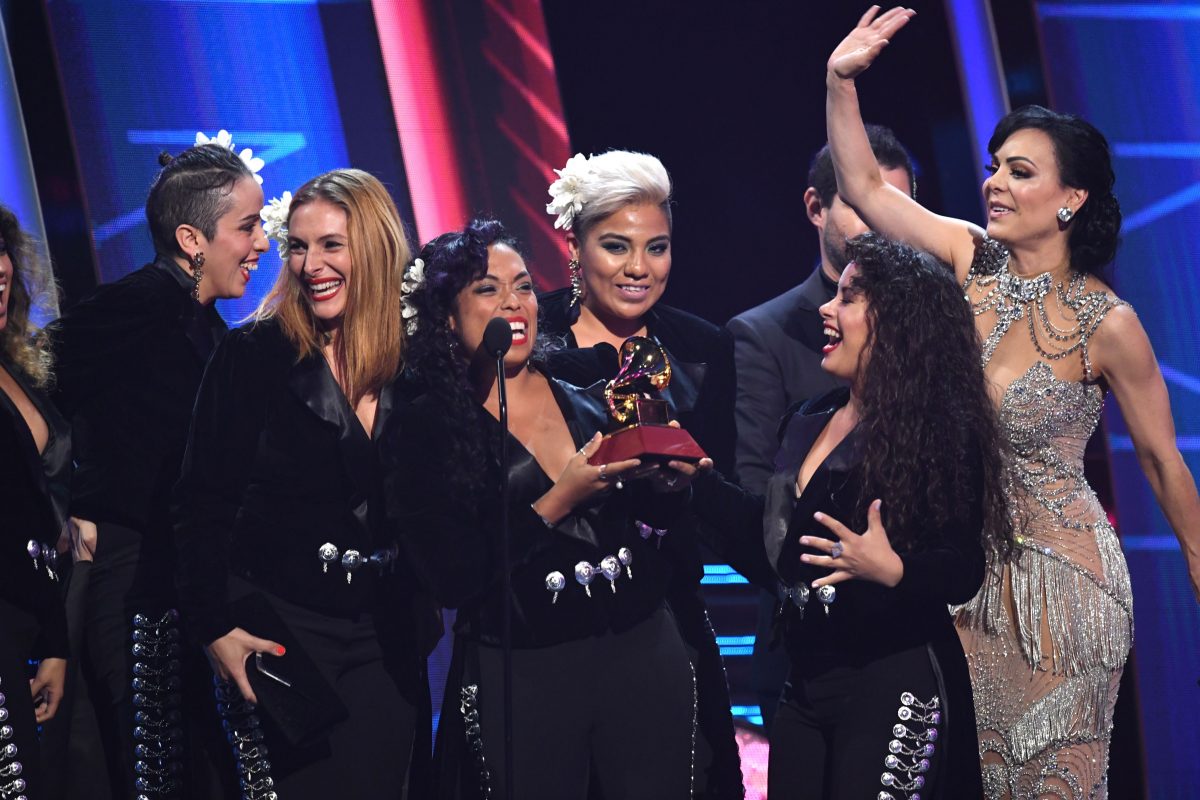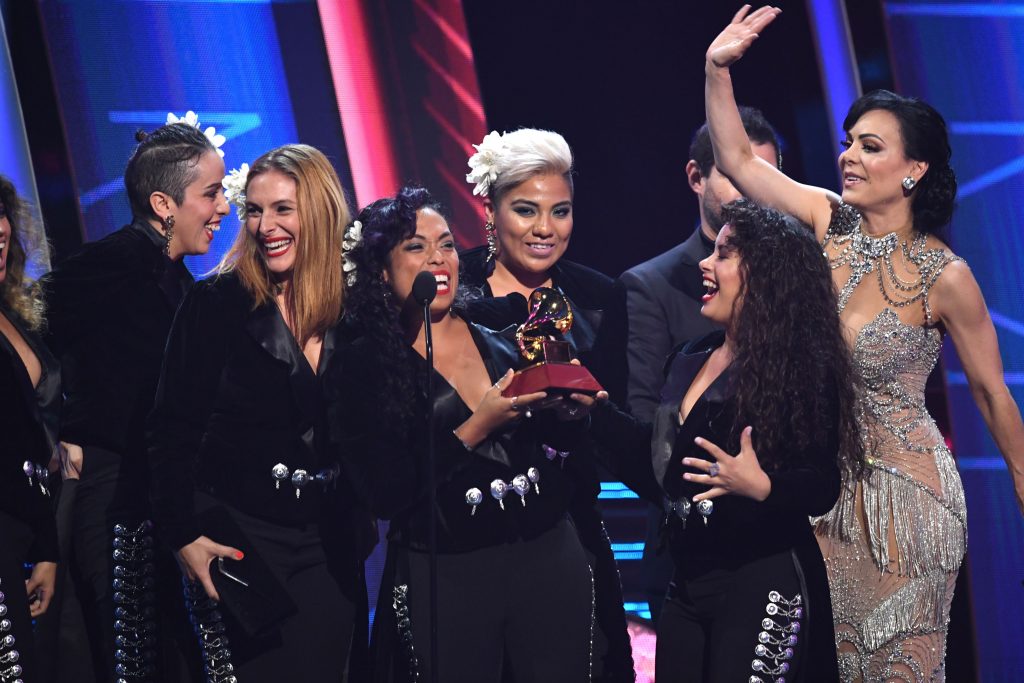The conversation around women’s representation in music continued to surge this year after the embarrassingly male-dominated 2018 Grammys. Now, Ruidosa — the feminist platform and festival organizer — has published a critical study that shines a light on how seriously gender inequality is affecting women in the Latin music industry.
Ruidosa shared the results of an analysis they did that examined more than 500 categories at last year’s major Latin music awards, which include the Latin Grammys, the Latin Billboards, and the 40 Principales Awards. They found that women were horrendously underrepresented in 2017, winning awards at extremely low rates compared to their male counterparts.
The results should not come as a shock, given the music industry’s tendency to exclude and oppress women, but the numbers are still pretty depressing: Only 68 women received award nominations out of a possible 504, which is just 14 percent. Men, on the other hand, got 76 percent of the nominations, while gender-diverse bands secured 10 percent. Perhaps more frustratingly, another stat showed that there were only 14 female award winners out of a potential 117 prizes, which is a bit under 12 percent. Men snagged 82 percent of music awards.
? ¿Cuántas mujeres participaron en premios latinoamericanos de música en 2017? En @ruidosafest analizamos más de 500 categorías de los Latin Grammy, Latin Billboard y los Premios 40 Principales para ver cuántas nominaciones y ganadoras mujeres hay ? La respuesta ¡SON POCAS! pic.twitter.com/T7OqQRL1r6
— RUIDOSA (@ruidosafest) February 5, 2018
¿Cuál fue el premio con mayor participación de mujeres? Los premios #LatinGrammys tuvieron 18% mujeres nominadas y 19% ganadoras. pic.twitter.com/WOSjqffL1s
— RUIDOSA (@ruidosafest) February 5, 2018
En cambio, los #LatinBillboard Awards tienen el menor porcentaje de participación, con 8% de mujeres nominadas y sólo un 2% de mujeres ganadoras. pic.twitter.com/bkraLdifow
— RUIDOSA (@ruidosafest) February 5, 2018
Of the three awards shows Ruidosa analyzed, the Latin Billboards had the least number of women winners and nominees in 2017; they made up only eight percent of nominees and just two percent of winners. The Latin Billboards are based on sales, radio airplay, and streaming/social numbers used to determine Billboard’s weekly charts, which have been notoriously hard for women to break. In 2015, zero women made it onto the Hot Latin Songs for 21 weeks, and it’s incredibly rare to see a solo female act in the no. 1 spot.
Things fared slightly better at the Latin Grammys, which are guided by voting members of Latin Academy of Recording Arts & Sciences, but the percentages are still underwhelming. Eighteen percent of women were nominated for awards, while 19 percent of women actually won prizes.
Ruidosa traced a lot of the problem to the initial nomination. The rate at which women receive nominations and win awards is actually pretty similar to the rate at which men receive nominations and win awards, showing that the most important hurdle is getting recognized first.
This bleak narrative isn’t unlike what’s been happening in the mainstream U.S. pop market. A study from the Annenberg/USC’s Inclusion Initiative showed that of the 899 people nominated for Grammy awards between 2013 and 2018, 90.7 percent were men and only 9.3 percent were women. Ruidosa’s study is a much-needed look at inequality in the Latin music landscape, which has been a topic of discussion for years. While more women have started to crack the charts recently, it’s critically important that we keep talking about the rate at which they get recognized for their work, as well as the stereotypes and expressions of womanhood that are acceptable for them to perform. At the very least, these sobering Ruidosa charts help us visualize and understand this lack of representation.
Read the full study over at Ruidosa’s website.
[H/T Ruidosa]




